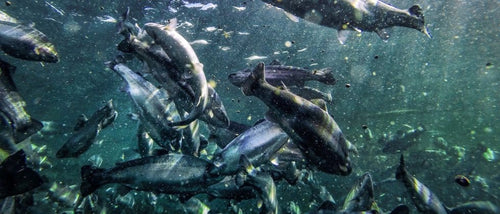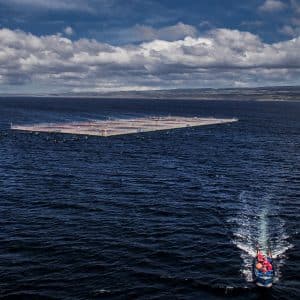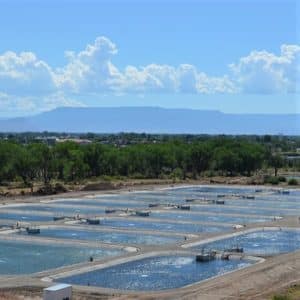BACK
Acme And Aquaculture
By: Acme Smoked Fish

WHAT IS AQUACULTURE?

The dictionary definition of aquaculture is, “the cultivation of aquatic animals and plants, especially fish, shellfish, and seaweed, in natural or controlled marine or freshwater environments.” It is believed that mankind has raised fish under such circumstances since as early as 6,000 BC. There is archaeological evidence of this ancient practice throughout the world, most notably in Africa, Asia, and Australia, where shoals of juvenile wild fish were caught to raise and then fed to large human populations at later stages in their lifecycle. The first known modern application of aquaculture, that is the raising of fish from eggs to maturity in a controlled environment, occurred in 1733 when a German farmer successfully captured fish eggs, hatched them, and raised them to harvest. As far as we know, this was the first fish farmer.
ACME SMOKED FISH & RAS
Here at Acme, we are always looking for new innovations to produce the highest-quality smoked fish and improve our sustainability practices. In the case of products such as smoked trout and sturgeon, RAS, otherwise known as recirculating aquaculture systems, has enabled us to do that. Our suppliers borrow from the natural waters of Denmark for our trout and from the roaring rivers of Northern California for our sturgeon. They do so in a limited fashion with a careful respect for nature. We are continually exploring where RAS falls in with our strategy to limit our impact on the environment. Next time you enjoy some of our smoked trout or sturgeon, you can feel good about the fact that you are feeding yourself with something that isn’t at odds with nature, but instead is allied with it.
WHAT ARE RECIRCULATING AQUACULTURE SYSTEMS?

Recirculating aquaculture systems are land-based systems that can be established nearly anywhere with available space. Recirculating aquaculture systems reduce the strain on existing waterways due to their limited reliance on the continuous input of fresh water. Up to 95% of water inputs can be reused throughout each cycle, with no loss in water quality, through the use of cutting edge biofiltration methods. Through these biofiltration methods, fish waste can be repurposed as fertilizer for agriculture. When RAS, natural fertilizer outputs, and agriculture systems are integrated holistically, this is called Aquaponics.
WHAT ARE AQUAPONICS?
Aquaponics is the practice of using unified systems to cultivate fish and plants together in a fabricated recirculating ecosystem. These systems use natural fish waste outputs from RAS cultivated fish, convert them into plant nutrients, and the hydroponic plants absorbing these nutrients function as biofiltration for the integrated aquaculture system. This environmentally friendly method for growing multiple types of food is less water-intensive than aquaculture or agriculture alone and reduces the need for water filtrate methods or chemical fertilizers.
WHY IS FISH FARMING CONTROVERSIAL?

In the early days of conventional fish farming, this seafood cultivation technology was poorly understood, and proper guardrails and oversight for the industry were yet to be enacted. In the excitement over this new means of meeting global demand for the seafood category, the industry developed without a full comprehension of the potential impacts and necessary controls for this system.
As aquaculture production techniques have evolved, becoming more efficient, the lasting negative reputation has been hard to shake. With the use of hormones and antibiotics declining across the industry and the science behind fish feed continuously improving, farm-raised fish is better for the consumer today than it has ever been. Also, with the best feed conversion ratio of any farm-raised protein, fish farming is one of the most sustainable cultivated protein sources on the market today.
As with any industry, there are good actors and there are bad actors. Fortunately, there are now multiple independent oversight organizations that are equipping consumers with the means to easily discern what type of aquaculture practices a producer and their suppliers condone. Labels such as BAP (Best Aquaculture Practices), or ASC (Aquaculture Stewardship Council) can serve as the average consumer’s compass in determining best choices in farm-raised fish. You can read more about BAP and ASC certifications in our annual Sustainability Report.
Here at Acme, we are always looking to learn, grow and innovate to better serve our customers. With this in mind, we hope that you learned something new today. If you did, share this knowledge, but keep on asking questions. If there is anything that you want to know about the seafood or smoked fish industries, and you think that we can help, please reach out. Share your curiosity with us, and let’s understand more together.